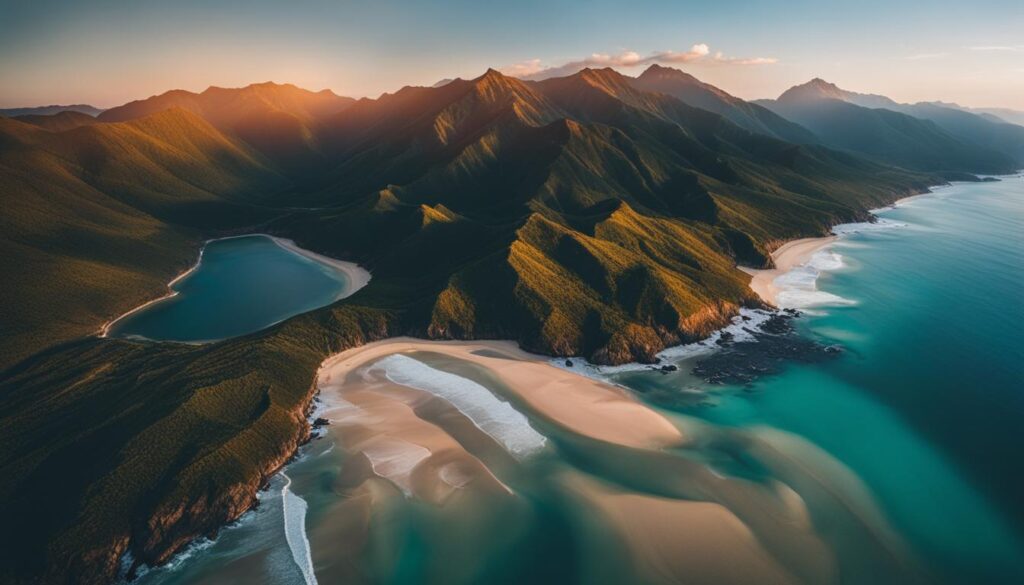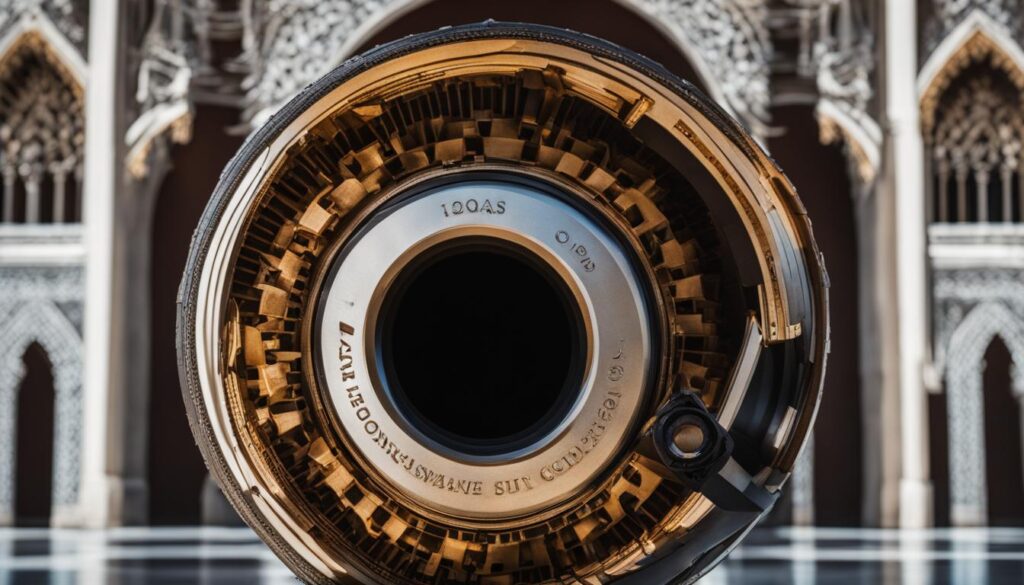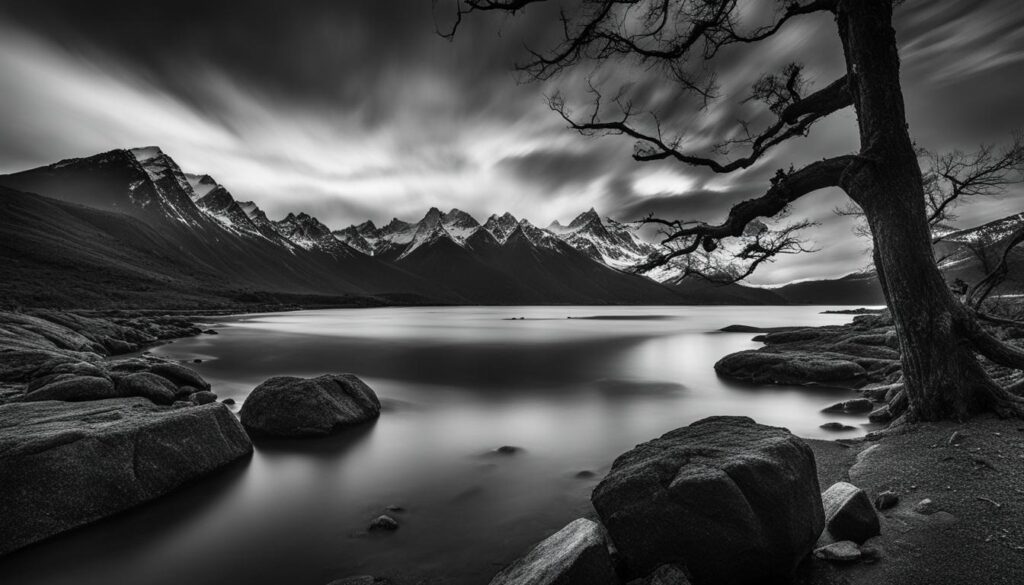We may earn money or products from the companies mentioned in this post.
Wildlife photography is an exciting and challenging genre that requires a combination of technical skills, patience, and a deep appreciation for nature. Whether you are a beginner or an experienced photographer, there’s always something new to learn in wildlife photography.
In this section, we’ll share tips and techniques that will help you master the art of wildlife photography. From choosing the right camera gear to understanding animal behavior and capturing dynamic wildlife moments, we’ll cover everything you need to know to elevate your wildlife photography skills.
Key Takeaways:
- Choosing the right camera gear is essential for wildlife photography
- Understanding animal behavior can help you anticipate their movements and capture captivating photos
- Techniques such as freezing motion and panning can help you capture dynamic wildlife moments
- Post-processing can enhance your wildlife photos and bring out their full potential
- Patience and a deep passion for nature are key to becoming a successful wildlife photographer
Understanding Wildlife Behavior for Successful Photography
Wildlife photography is not just about capturing stunning images, but also about understanding the habits and behavior of animals in their natural habitat. Being aware of these behaviors can help you anticipate their movements and capture captivating moments.
“To photograph truthfully and effectively is to see beneath the surfaces and record the qualities of nature and humanity which live or are latent in all things.” – Ansel Adams
Nature is full of surprises, and capturing these moments requires patience, observation, and knowledge. Here are some tips to help you understand wildlife behavior for successful photography:
Observe and Interpret Animal Behavior
Before you start photographing, take some time to observe the animals in their environment and get a sense of their behavior. Look for patterns, such as feeding or mating habits, and observe how they interact with one another or with their surroundings.
Timing and Location
Timing and location are essential factors for capturing wildlife behavior. Knowing when and where to find animals is crucial in wildlife photography. You can do some research or ask local guides for tips and recommendations.
Patience and Practice
Wildlife photography requires patience, and sometimes you may have to wait for hours in order to capture the perfect shot. However, patience pays off, and with practice, you will become more skilled at predicting animal behavior and capturing stunning wildlife images.
Camera Settings for Wildlife Photography
When it comes to camera settings, it is best to use manual mode as it gives you more control over the exposure and depth of field. You should also use a fast shutter speed to freeze motion, especially if you are photographing birds or other animals in action.
Composition
Composition is a key element in wildlife photography, and it can make or break a photograph. You should pay attention to the background, framing, and the animal’s position in the frame. Try different angles and perspectives to create unique images.
By understanding wildlife behavior, you will be able to capture breathtaking wildlife images that tell a story and capture the beauty and diversity of nature. In the next section, we will discuss how to choose the right gear for wildlife photography.
Choosing the Right Gear for Wildlife Photography
Wildlife photography requires specialized gear that can withstand the rigors of outdoor shooting, capture fast-moving subjects, and deliver high-quality results. Choosing the right gear is essential for wildlife photographers to create stunning images that showcase the beauty and diversity of the natural world. Here are some essential wildlife camera gear to consider:
| Camera Body | Lenses | Tripods and Monopods | Teleconverters |
|---|---|---|---|
| A camera body with a fast autofocus system and a high burst rate is crucial for capturing fast-moving wildlife. Look for models with weather-sealed bodies and good low-light performance to shoot in different lighting conditions. | Invest in high-quality lenses that allow you to get up close and personal with your subjects. Zoom lenses with a broad focal range are ideal for wildlife photography, as they provide versatility and flexibility in the field. Consider purchasing wide-angle lenses for landscape shots and telephoto lenses for capturing distant animals or birds in flight. | When shooting with a telephoto lens, a tripod or monopod can help stabilize your camera and reduce shake. Choose a tripod or monopod that is sturdy, lightweight, and easy to set up. Look for models with flexible legs, adjustable heights, and quick-release plates that allow you to attach and detach your camera quickly. | Teleconverters can extend the focal length of your lenses, allowing you to magnify distant subjects further. They’re a cost-effective way to increase the reach of your lenses without purchasing extra gear. However, teleconverters can reduce the amount of light transmitted to your camera and may result in slower autofocus speed and lower image quality. |
When choosing gear for wildlife photography, consider your budget and shooting preferences. High-end cameras and lenses can be expensive, but they deliver exceptional image quality and durability. However, entry-level gear can still produce great results and may be a more affordable option for beginners. Remember, investing in quality gear is an investment in your photography and can pay off in the long run.
With the right wildlife camera gear, you’ll be ready to capture stunning images of animals in their natural habitats. Stay tuned for our next section on Techniques for Capturing Wildlife in Action, where we’ll explore various techniques for photographing animals in motion and creating dynamic wildlife images.
Techniques for Capturing Wildlife in Action
Wildlife photography is all about capturing the beauty and energy of nature. To create compelling wildlife images that truly stand out, it’s crucial to master the art of capturing wildlife in action. In this section, we will explore various techniques for doing just that, from freezing motion to panning and tracking. By following these tips, you’ll be well on your way to capturing stunning images of birds in flight, animals running, and other dynamic wildlife moments.
Freezing Motion
One of the most effective techniques for capturing wildlife in action is to freeze the motion. This technique is particularly useful when photographing birds in flight or animals running. To freeze motion, you’ll need to use a fast shutter speed. The exact shutter speed you use will depend on the speed of the animal you’re photographing and the effect you want to achieve. As a general rule, a shutter speed of at least 1/1000th of a second is a good starting point for most wildlife photography.
Panning and Tracking
Another effective technique for capturing wildlife in action is to use panning and tracking. This technique involves moving the camera along with the subject, keeping it in focus while blurring the background. Panning and tracking can create a sense of motion and energy in your images, making them more dynamic and exciting. To use this technique, you’ll need to use a slower shutter speed and follow the subject’s movement with your camera. Practice makes perfect with panning and tracking, so be patient and keep experimenting until you get the perfect shot.
Bird Photography
Bird photography is a unique and challenging sub-genre of wildlife photography. To capture stunning images of birds, it’s important to understand their behavior and habitats. Birds can be skittish and easily scared away, so it’s important to approach them quietly and slowly. One effective technique for bird photography is to use a shallow depth of field, which will blur the background and bring attention to the bird. Another important consideration is to position yourself at the bird’s eye level, which will create a more intimate and engaging image.
Post-Processing Tips for Enhancing Wildlife Photos
Post-processing is a crucial step in wildlife photography that can take your wildlife images from good to great. Here are some post-processing tips and techniques to help you enhance your wildlife photos:
1. Basic Adjustments
Start by making basic adjustments such as adjusting the exposure, contrast, and color balance. You can also use the crop tool to adjust the composition of your image to emphasize the subject.
2. Advanced Editing Techniques
For more advanced editing, consider using tools such as the healing brush to remove distracting elements or the cloning tool to duplicate parts of the image. You can also use the dodge and burn tools to adjust the lighting and shadows in specific areas of the image.
3. Maintain a Natural Look
While it’s important to enhance your images, be careful not to overdo it. Strive to maintain a natural look that accurately represents the scene you captured. Avoid oversaturating the colors, over-sharpening the image, or adding excessive filters.
4. Experiment with Different Styles
Don’t be afraid to experiment with different styles and techniques to create unique and captivating wildlife images. You can try using black and white processing, adding a vignette, or playing with the color temperature for a more creative look.
5. Practice and Refine Your Skills
Post-processing is a skill that takes time and practice to master. Experiment with different techniques and workflows until you find one that works for you. The more you practice, the more you will refine your skills and develop your own unique style.
Remember, post-processing should enhance your wildlife images, not replace them. With these post-processing tips and techniques, you can create stunning wildlife photos that reflect the beauty and majesty of the natural world.
Conclusion
Congratulations on completing this journey on mastering the art of wildlife photography! We hope you have learned valuable techniques and tips that will aid in your endeavors to become a skilled wildlife photographer. Remember, wildlife photography is more than just capturing a perfect picture. It’s about telling a story and showcasing the beauty of nature.
Being a wildlife photographer requires patience, passion, and dedication. You must be willing to put in the work and time to improve your skills. Remember to always respect and protect the wildlife you are photographing.
Keep Exploring
Now that you have gained a deeper understanding of wildlife photography, it’s time to put your skills to the test. Get out there, explore, and capture the beauty of nature with your camera.
Don’t forget to share your journey with the world. Connect with other wildlife photographers and enthusiasts, join online groups or communities, and participate in wildlife photography contests. This is a great way to learn from others, receive feedback, and showcase your work.
Fulfill Your Potential as a Wildlife Photographer
Whether you’re a hobbyist or aspiring professional, wildlife photography has limitless potential. Keep learning, practicing, and experimenting. Remember, there are no rules. The sky’s the limit when it comes to creating breathtaking wildlife images.
Become the wildlife photographer you’ve always wanted to be. With the techniques, tips, and gear discussed in this article, and your passion for nature, you are well on your way to capturing stunning wildlife images and fulfilling your potential as a wildlife photographer.
FAQ
What is wildlife photography?
Wildlife photography is a genre of photography that focuses on capturing images of animals and their natural habitats in their most authentic form. It involves observing wildlife behavior, selecting the right camera gear, and using various techniques to capture stunning images.
How do I improve my wildlife photography skills?
To improve your wildlife photography skills, it is important to understand wildlife behavior, practice patience, and learn techniques for capturing animals in action. Additionally, investing in the right camera gear and continuously practicing and experimenting will help you master the art of wildlife photography.
What camera gear is best for wildlife photography?
The ideal camera gear for wildlife photography includes a good quality camera body with fast autofocus capabilities, telephoto lenses with long focal lengths, and accessories like tripods and teleconverters. It is also important to consider the weight and portability of the gear, depending on the type of wildlife photography you plan to pursue.
How can I capture animals in motion?
To capture animals in motion, you can use techniques like panning, tracking, and adjusting your camera settings to freeze the motion. It is important to anticipate the animal’s movement, focus on their eyes or important features, and use burst mode to capture a series of images. Practice and experimentation will help you perfect the art of capturing animals in motion.
Can I enhance my wildlife photos through post-processing?
Yes, post-processing can greatly enhance your wildlife photos. By adjusting the colors, contrast, and sharpness, you can bring out the details and atmosphere in your images. However, it is important to maintain a natural look and avoid excessive editing that may distort the authenticity of the wildlife subjects.
Affiliate Disclosure: This post may contain affiliate links. If you purchase through our link, we may receive a small commission, but at no additional cost to you. For more information, please see our Disclosure statement.



